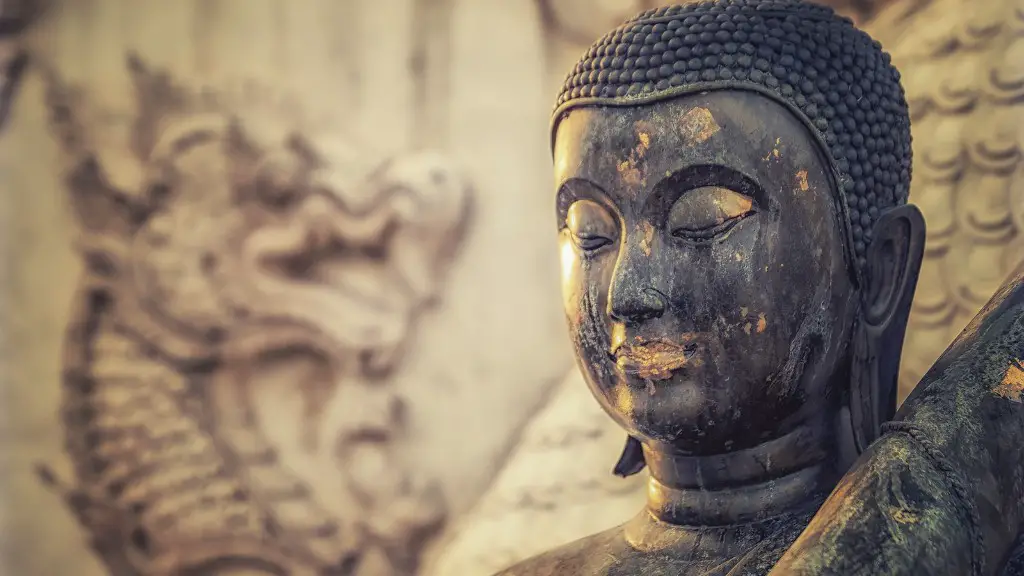Kali (also known as ‘Mahakali’) is a powerful Hindu goddess with multiple roles and identities. She is portrayed as a fierce warrior with four arms and is commonly depicted wearing a necklace of skulls and a girdle of human arms. In Hinduism, she is not only considered a powerful deity, but a goddess of transformation and liberation. Although many Hindu gods and goddesses are revered, Kali stands out due to her importance among devotees who worship her with reverence and dedication.
Kali is depicted as the ultimate female warrior and symbolizes divine power, strength and courage. She is seen as a protector, a provider of safety and security, and a symbol of female power. For example, in India, women wear a necklace of skulls called a ‘Kali mala’ or ‘Kali pendant’ as a reminder of the goddess’ power, and as a symbol of protection and courage. In Hinduism, Kali is seen as an unstoppable force that is constantly in motion, doing what is needed to keep the universe in balance and supporting her devotees.
In particular, Kali is thought to be the destroyer of illusions, which is a fundamental belief in Hindu traditions. These illusions can be anything from conventional ideas of beauty, power and status to unrealistic expectations and desires. Additionally, Hindus believe that Kali’s presence is a source of protection, purification, and renewal. She helps to destroy anything that is false, so that devotees can experience a deep level of understanding and devotion to a higher power. This is why Hindus regard Kali as an important goddess in their belief system and a powerful divine force.
However, Kali is much more than a powerful warrior goddess. She is also a symbol of growth, evolution, and transformation. It is believed that those who worship Kali can draw inspiration from her to become their truest selves and reveal their hidden potential. For example, some Hindus believe that by meditating on her form and teachings, devotees can reach a higher consciousness that can help them break free from the bonds of worldly attachment and reach self-realization. By following her teachings, devotees can reach self-liberation and spiritual enlightenment.
In addition to being a symbol of power, strength, and transformation, Kali symbolizes beauty and eternity. Hindus consider Kali to be a timeless, infinite and all-pervading deity whose presence can be felt in all aspects of life. Her beauty is often described as being both dark and mysterious, yet also inspiring and awe-inspiring. Her presence is not just something to be feared, but something to be revered and respected. By appreciating her beauty, Hindus believe that devotees can better understand the mysteries of life, death and rebirth.
In short, Kali is an important deity to Hindus. She is seen as powerful and fierce yet also beautiful and mysterious. She can serve as a source of inspiration and strength and help devotees break free from the bonds of worldly attachment and reach spiritual liberation. In Hinduism, she is seen as a powerful goddess of renewal and transformation, and her image and teachings are used to help devotees reach a higher state of awareness and enlightenment.
Kali as a Symbolic Figure
In Hinduism, Kali also serves as an important symbolic figure. She symbolizes divine strength and courage, and is seen as a protector of the vulnerable and weak. Her four arms represent the four directions of the universe, and her necklace of skulls symbolizes destruction and renewal. The girdle of human arms she wears symbolizes her power to protect and provide safety and security. As a symbol of divine power, Kali is also seen as a figure of female strength and courage. For example, in India, many women wear a “Kali mala” or “Kali pendant” as a reminder of her power, and as a symbol of protection and courage.
Kali is also seen as a symbol of death and destruction. Unlike other Hindu gods and goddesses, who are seen as benevolent and nurturing, Kali is seen as a fierce warrior who is unafraid to wield her divine power and destroy evil. For many Hindus, this makes her a powerful archetype; her destructive nature can represent the ability to break free from outdated systems of thought and stagnation. In contrast, the necklace of skulls she wears symbolizes her ability to bring about renewal and rebirth. In this sense, Kali’s destructive power can be seen as a necessary part of the process of transformation and renewal.
Kali’s symbolism goes beyond just strength and destruction. She is also seen as a symbol of fertility, growth and evolution. The dark, mysterious quality of her beauty has been compared to the full moon, and her power to transform and renew is seen as a representation of birth and renewal. This is why she is often referred to as Ma (mother): her presence is associated with giving life and new beginnings.
Kali in Rituals and Ceremonies
In Hindu traditions, Kali is often the focus of religious rituals and ceremonies. These ceremonies are designed to bring devotees closer to the goddess, and all of her aspects such as her strength, beauty and power. For example, devotees engage in rituals such as chanting, prayers, singing and offerings to honor the goddess. Additionally, many Hindus observe certain days of the week that are dedicated to Kali, such as Tuesdays and Saturdays, when they will engage in rituals to better understand the goddess and gain her protection and guidance.
In addition to observing certain customs, many devotees will also make an offering to Kali. These offerings can range from food and flowers to incense and coins. The most important offering to the goddess is the devotion of devotees, which is done through meditation and chanting of mantras. Making an offering to Kali is seen as a way of seeking her blessings and protection, as well as a way of showing respect and gratitude to the goddess.
Kali is also worshipped in many Hindu temples and shrines. These temples and shrines can vary greatly in size and appearance, but all feature statues and images of the goddess in her various forms. Devotees often make pilgrimages to these places of worship to seek her protection and guidance, gain wisdom, and renew their devotion to the goddess.
Conclusion of Kali’s Importance to Hinduism
In conclusion, Kali is an important deity in Hinduism. She is seen as a powerful and fierce warrior goddess, yet also a symbol of beauty, eternity and transformation. Her presence is seen as a source of protection, purification, and renewal, and her image and teachings are used by devotees to help reach a higher state of awareness and enlightenment. Additionally, many Hindus observe certain days of the week and engage in rituals dedicated to Kali as a way to better understand the goddess and gain her protection and guidance. All of these factors demonstrate why Kali is an important part of Hinduism and is worshipped by devotees with respect and dedication.
Kali in Popular Culture
Kali is not only revered by Hindus, but is often depicted in popular culture as well. For example, she has been featured in television shows and movies, music lyrics, and in art and literature. She is also often used as a symbol in popular culture to represent power and strength, female courage and the ability to overcome obstacles.
In fact, Kali has become so popular that she is even featured in video games.Her presence in video games often symbolizes power, courage and strength, and allows players to tap into her energy to become an unstoppable force. This allows people to experience her power in a more tangible way, as they are better able to understand and appreciate Kali’s significance and importance in Hinduism.
Overall, it is clear that Kali is an important figure in popular culture as much as she is in Hinduism. Her presence in popular culture has allowed people to understand and appreciate her power, and has served as a reminder of the goddess’s importance to the Hindu faith.
Kali in Art and Literature
Kali is also featured in many works of art and literature. For instance, she is often portrayed in paintings and sculptures, as well as her image often appears in Hindu ritual Fire worship or ‘homa’ ceremonies. In these works of art, her form often serves as an inspiration for devotees to draw upon when seeking liberation and renewal in their lives. Additionally, many books have been written about her life and teachings, which devotees often use to further their understanding of the goddess.
Not only is Kali portrayed as a goddess in popular art and literature, but she also features prominently in Hindu temples. In many Hindu temples, statues and images of the goddess can be found, often in the form of a fierce warrior with multiple arms, necklaces of skulls and a girdle of human arms. These images serve as a reminder of her extreme power and inspire devotees to draw upon her strength, courage and protection.
Overall, it is clear that Kali’s power and importance is demonstrated not only in Hinduism, but in popular culture, art, and literature as well. Her presence in these aspects of life serves as an inspiration to devotees, reminding them of her significance and guiding them to draw upon her power in order to reach transformation and liberation in their lives.


